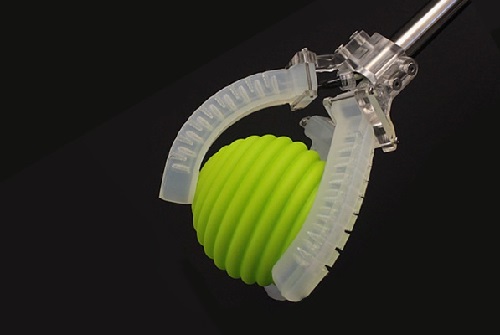
Inspired by our bodies’ sensory capabilities, researchers at the Harvard John A. Paulson School of Engineering and Applied Sciences (SEAS) and the Wyss Institute for Biologically Inspired Engineering have developed a platform for creating soft robots with embedded sensors that can sense movement, pressure, touch, and even temperature.
“Our research represents a foundational advance in soft robotics,” said Ryan Truby, Ph.D. graduate at SEAS. “Our manufacturing platform enables complex sensing motifs to be easily integrated into soft robotic systems.”
Integrating sensors within soft robots has been difficult in part because most sensors, such as those used in traditional electronics, are rigid. To address this challenge, the researchers developed an organic ionic liquid-based conductive ink that can be 3D printed within the soft elastomer matrices that comprise most soft robots.
“To date, most integrated sensor/actuator systems used in soft robotics have been quite rudimentary,” said Michael Wehner, former postdoctoral fellow at SEAS. Wehner is now an assistant professor at the University of California, Santa Cruz. “By directly printing ionic liquid sensors within these soft systems, we open new avenues to device design and fabrication that will ultimately allow true closed loop control of soft robots.”
“The function and design flexibility of this method is unparalleled,” said Truby. “This new ink combined with our embedded 3D printing process allows us to combine both soft sensing and actuation in one integrated soft robotic system.”
To test the sensors, the team printed a soft robotic gripper comprised of 3 soft fingers or actuators. The researchers tested the gripper’s ability to sense inflation pressure, curvature, contact, and temperature. They embedded multiple contact sensors, so the gripper could sense light and deep touches.
Next, the researchers hope to harness the power of machine learning to train these devices to grasp objects of varying size, shape, surface texture, and temperature.
The research is published in Advanced Materials.
